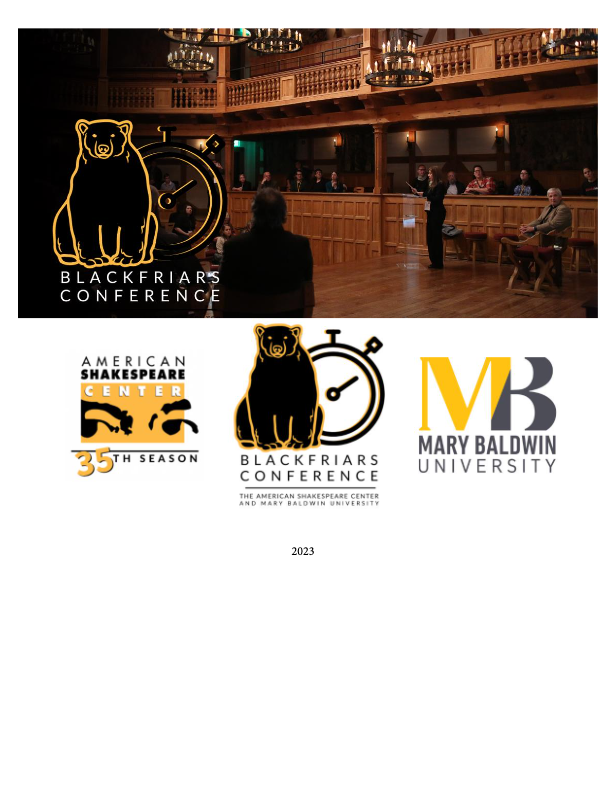Plenary: Are There Transgender Characters in Shakespeare?
Blackfriars Conference, American Shakespeare Center, Staunton, Virginia, November 4, 2023 ::: YouTube
There are certainly non-binary actors on stage, but are there Shakespearean characters who can be read as trans? The answer is yes.
To ask whether there are transgender characters is to ask questions about the performance of gender roles. We are also asking questions about the articulation of gender in early modern and modern times. Genderplay is the name of the game, and it is serious business to be playful with gender.
There are many transgender characters historically, but their presence is not seen or acknowledged.All utterances retain a level of openness, because meanings emerge contextually over time in drama.
Using trans as method, we can analyze gendered encodings in Banquo’s and Macbeth’s loaded questions to the witches: “You should be women, / And yet your beards forbid me to interpret that you are so” (1.3.40-41) and “what are you” (43) as well as the crux of being “of woman born.” We can ditch cisgender sexism in traditional interpretations of Cesario’s self-identification to Duke Orsino in Twelfth Night that he is ‘all the daughters of [his] father’s house, / And all the brothers too’ (2.4.117-118).
There is a cultural tendency to seek false clarity with literal-mindedness. For example, the language of Twelfth Night is suggestive and porous rather than prescriptive. We should suspend cisgender sexism rather than engage in suspension of disbelief regarding gender crossings.
Shakespearean theatre is trans theatre. But current legislation criminalizes transgender people and performance. These anti-trans attitudes endanger classical and Shakespearean theatre, which is why high-school drama programs are withering and theatre festivals are shrinking.

